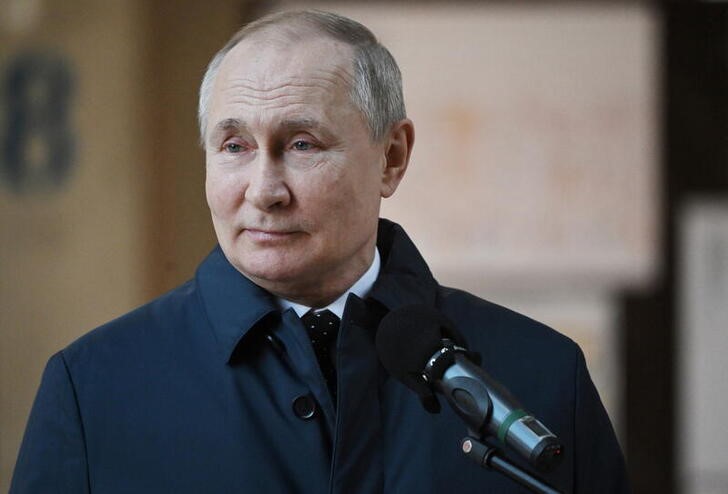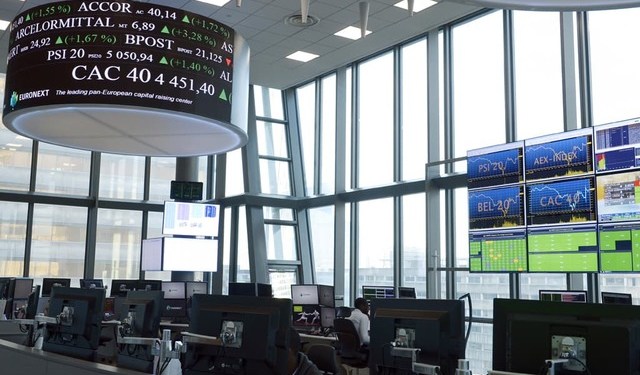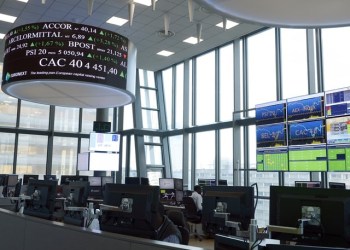
© Reuters
LCO
+0.01%
Add to/Remove from Watchlist
Add to Watchlist
Add Position
Position added successfully to:
Please name your holdings portfolio
Type:
BUY
SELL
Date:
Amount:
Price
Point Value:
Leverage:
1:1
1:10
1:25
1:50
1:100
1:200
1:400
1:500
1:1000
Commission:
Create New Watchlist
Create
Create a new holdings portfolio
Add
Create
+ Add another position
Close
CL
+0.24%
Add to/Remove from Watchlist
Add to Watchlist
Add Position
Position added successfully to:
Please name your holdings portfolio
Type:
BUY
SELL
Date:
Amount:
Price
Point Value:
Leverage:
1:1
1:10
1:25
1:50
1:100
1:200
1:400
1:500
1:1000
Commission:
Create New Watchlist
Create
Create a new holdings portfolio
Add
Create
+ Add another position
Close
By Barani Krishnan
Investing.com — The official stance of the Kremlin is that it will not adhere to the West’s price caps on Russian oil.
In reality though, President Vladimir Putin’s administration is allowing Russian oil companies to sell however many barrels at whatever price they can get.
This effectively means the companies can apply any discounts necessary to transact oil in their hold, with the G7’s price cap already setting a barrel of Russian Urals at between $25 or $35 below the global crude benchmark Brent.
Media headlines on Monday suggested disparities between Russian government policy and actual activity in the physical oil market. That drove crude prices lower again, after a dip on Friday that came on the back of a rally over two previous weeks.
New York-traded West Texas Intermediate, or WTI, crude for March settled down $1.78, or 2.2%, at $77.90 per barrel after a session low at $77.75.
London-traded Brent crude for March delivery settled down $1.76, or 2%, at $84.90 per barrel. The session bottom was $84.33.
The slide came after the Russian government maintained that it “forbids oil exports that adhere to Western price caps,” according to a headline from Reuters.
That was, however, followed by two other news bulletins that said that “the Russian government has charged oil companies with overseeing contract wording” and that “the Russian government has not set a floor price for oil exports.”
“Decoded, the three messages mean the Russian government’s grandstanding against the West’s price caps remains, while it has opened the backdoor for its oil companies to do whatever is necessary to get their oil moving on the market,” said John Kilduff, partner at New York energy hedge fund Again Capital.
“This is a serious problem for the so-called cooperation within OPEC+, which is predicated on its principals Saudi Arabia and Russia keeping exports as low as possible and prices supported at the higher end.”
The headlines on Russia came ahead of Wednesday’s meeting of OPEC+, which groups the 13-member Saudi-led Organization of the Petroleum Exporting Countries with Russia and nine other oil producing allies.
OPEC+ is expected to leave its production targets unchanged from December levels at the meeting. Oil bulls typically look to OPEC+ to announce cuts when the group meets. Sans that, crude prices are likely to dip.
Since the G-7 price cap of $60 on a barrel of Russian oil came into force on Dec. 5, it has added to the woes of OPEC+ in trying to rally a market already depressed by mixed signals over demand from top importer China and fears of an impending recession in the United States and Europe.
While the Putin administration has publicly balked at the G7 price cap, it hasn’t really been able to fight it.
And because they’re getting less money for their oil now, the Russians are also shipping out more barrels these days than the Saudis wish them to. And those barrels are primarily going to two destinations — India and China, which are the only two nations the United States allows to buy sanctioned Russian oil without questions.
The increased exports from Russia are not only messing up OPEC+’s aim of keeping production tight but also hurting the Saudis as India and China were also the largest markets in Asia for Riyadh’s state oil company Saudi Aramco (TADAWUL:2222).
India bought an average of 1.2 million barrels of Russian Urals a day in December, which was 33 times more than a year earlier and 29% more than in November. Discounts for Urals at Russia’s western ports for sale to India under some deals widened to $32-$35 per barrel when freight wasn’t included, according to a Reuters report from Dec. 14.
Another Reuters report said China paid the deepest discounts in months for Russian ESPO crude oil in December, amid weak demand and poor refining margins. ESPO is a grade exported from the Russian Far East port of Kozmino and Chinese refiners are dominant clients for this.
If that wasn’t enough, a Reuters report from last Friday said Russia’s oil loadings from its Baltic ports were set to rise by 50% in January from December levels. Russia loaded 4.7M tonnes of Urals and KEBCO from Baltic ports in December. The January surge comes as sellers try to meet strong demand in Asia and benefit from rising global energy prices, the report said.
The Saudis, on their part, have slashed pricing on their own Arab Light crude to Asia to try and stay competitive amid the ruthless undercutting by the Russians — who are supposed to be their closest ally within OPEC+.
Separately, the Kremlin said in a statement on Monday that Putin held a phone call with Saudi Crown Prince Mohammed Bin Salman earlier in the day “to discuss cooperation within the OPEC+ group of oil producing countries in order to maintain oil price stability”, Reuters reported. No details were given.
The G7 will have two more price caps coming into force on Feb. 5 on refined oil products out of Russia. No one knows what effect those will have on the Kremlin.
Source: Investing.com


























